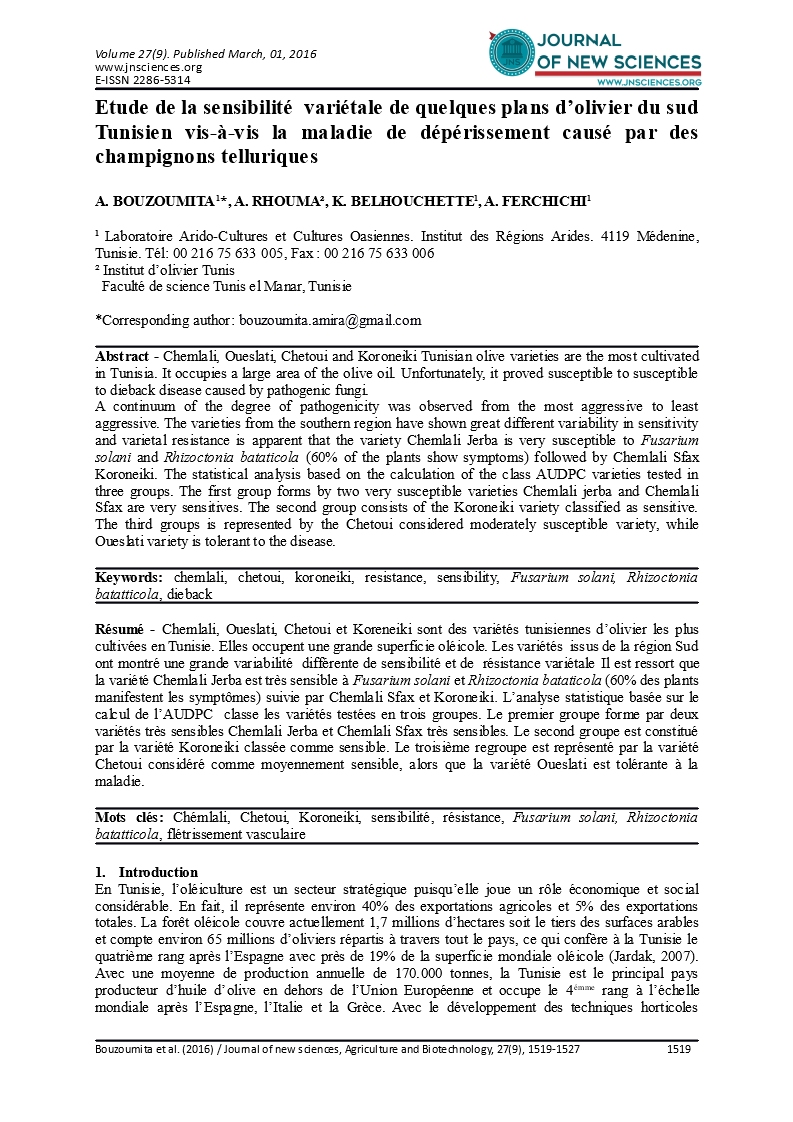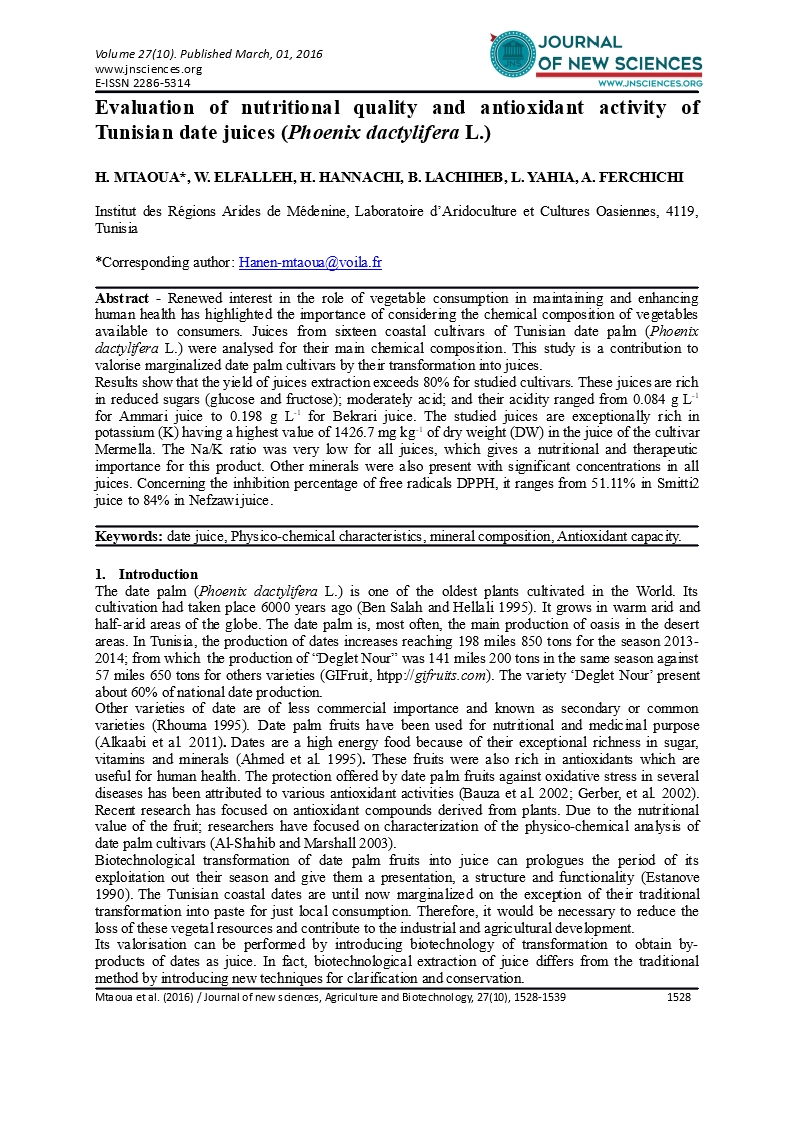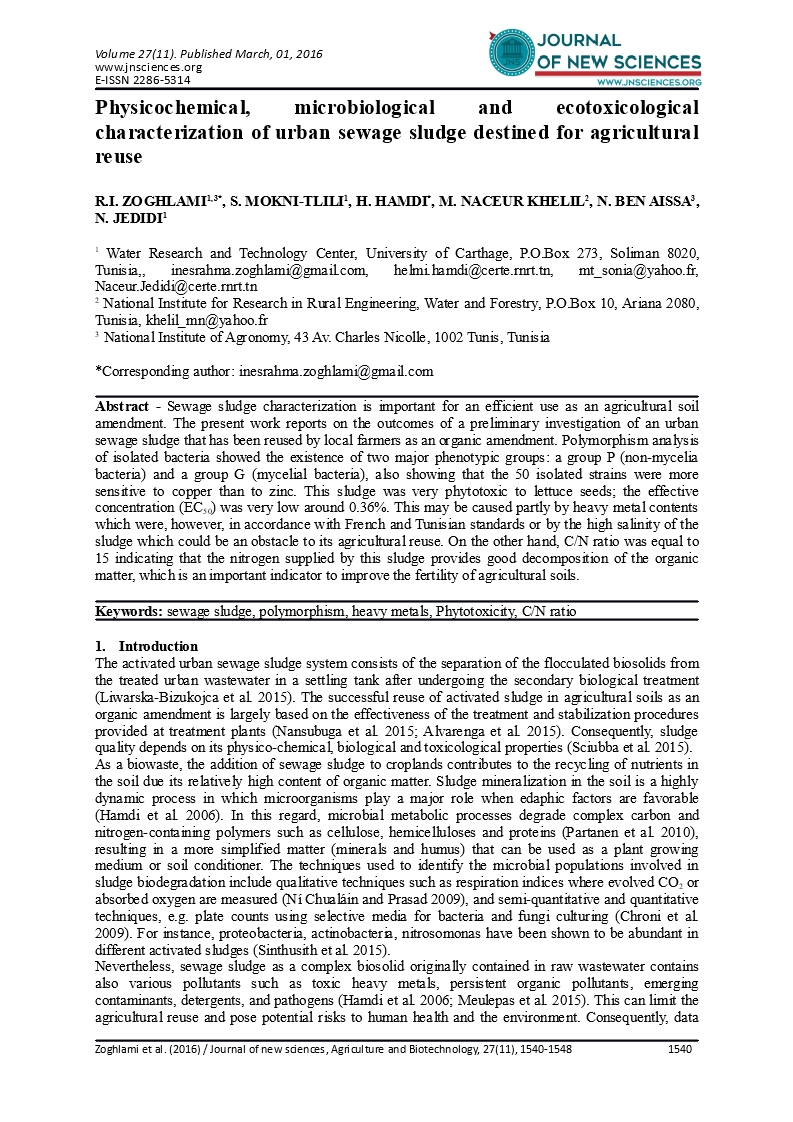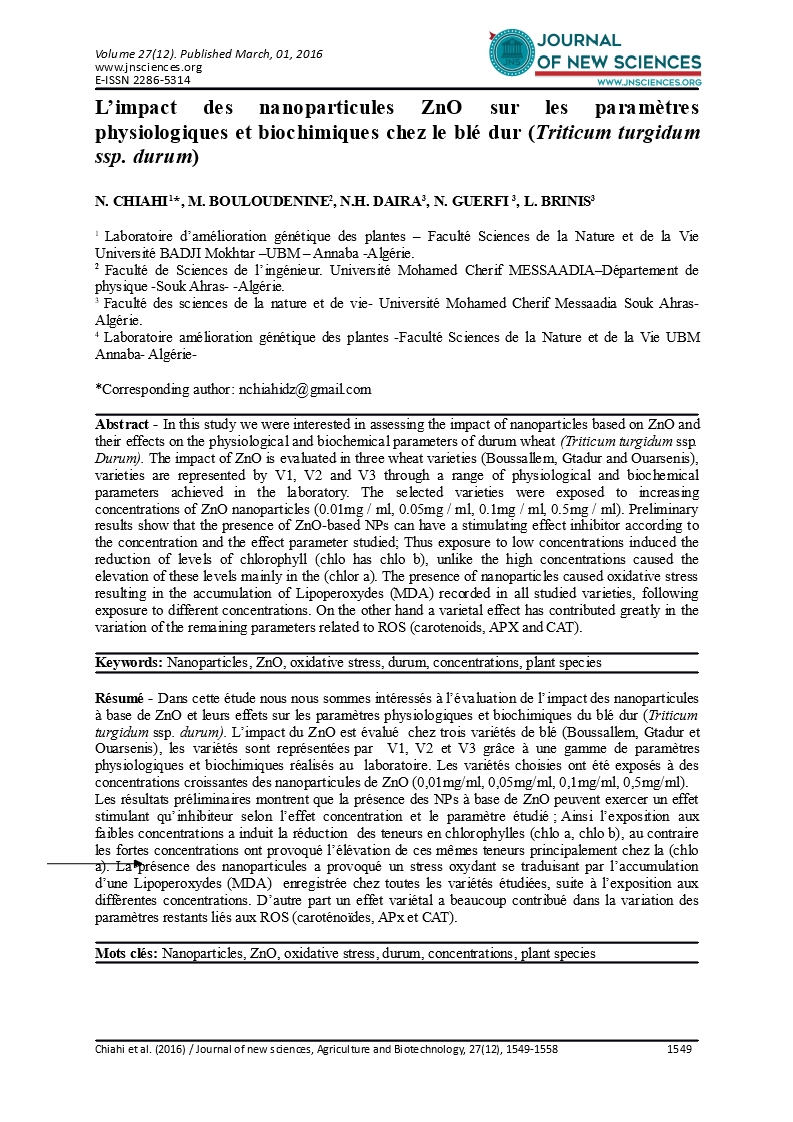- Category: Volume 27
- Hits: 6836
A comparative study between molecular and agro-morphological methods for describing genetic relationships in Tunisian faba bean populations.
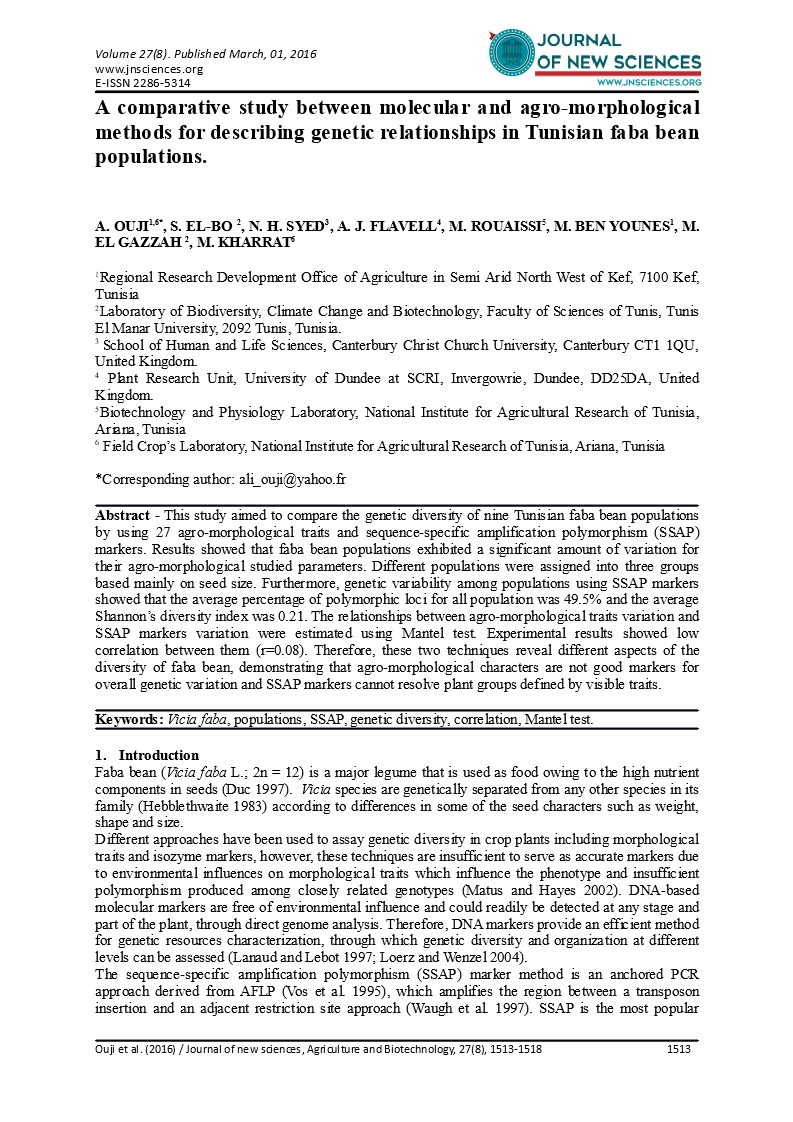
A. OUJI1,6*
S. El-BO 2
N. H. SYED3
A. J. FLAVELL4
M. ROUAISSI5
M. BEN YOUNES1
M. El GAZZAH 2
M. KHARRAT6
1Regional Research Development Office of Agriculture in Semi Arid North West of Kef, 7100 Kef, Tunisia
2Laboratory of Biodiversity, Climate Change and Biotechnology, Faculty of Sciences of Tunis, Tunis El Manar University, 2092 Tunis, Tunisia.
3 School of Human and Life Sciences, Canterbury Christ Church University, Canterbury CT1 1QU, United Kingdom.
4 Plant Research Unit, University of Dundee at SCRI, Invergowrie, Dundee, DD25DA, United Kingdom.
5Biotechnology and Physiology Laboratory, National Institute for Agricultural Research of Tunisia, Ariana, Tunisia
6 Field Crop’s Laboratory, National Institute for Agricultural Research of Tunisia, Ariana, Tunisia
Abstract - This study aimed to compare the genetic diversity of nine Tunisian faba bean populations by using 27 agro-morphological traits and sequence-specific amplification polymorphism (SSAP) markers. Results showed that faba bean populations exhibited a significant amount of variation for their agro-morphological studied parameters. Different populations were assigned into three groups based mainly on seed size. Furthermore, genetic variability among populations using SSAP markers showed that the average percentage of polymorphic loci for all population was 49.5% and the average Shannon’s diversity index was 0.21. The relationships between agro-morphological traits variation and SSAP markers variation were estimated using Mantel test. Experimental results showed low correlation between them (r=0.08). Therefore, these two techniques reveal different aspects of the diversity of faba bean, demonstrating that agro-morphological characters are not good markers for overall genetic variation and SSAP markers cannot resolve plant groups defined by visible traits.
Keywords: Vicia faba, populations, SSAP, genetic diversity, correlation, Mantel test.

